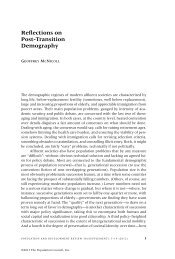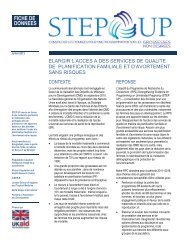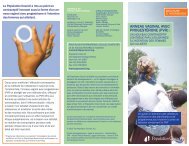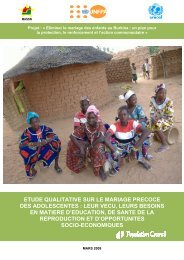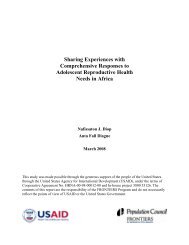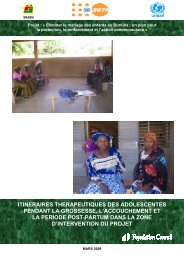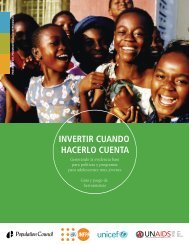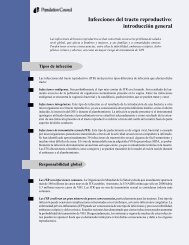Community Health Volunteer's Training Manual - Population Council
Community Health Volunteer's Training Manual - Population Council
Community Health Volunteer's Training Manual - Population Council
You also want an ePaper? Increase the reach of your titles
YUMPU automatically turns print PDFs into web optimized ePapers that Google loves.
•<br />
•<br />
•<br />
Development of action plan<br />
Implementation<br />
Follow up and evaluation<br />
Follow up and<br />
Evaluate<br />
Information Gathering<br />
and Analysis<br />
Implementation<br />
Figure 2.4.1: <strong>Community</strong> COPE Process Flow Chart<br />
Development of<br />
Action Plan<br />
<strong>Community</strong> participatory tools<br />
C-COPE is a two way process that depends on participation from both health care workers<br />
and community Fig 2.3.1: members. The <strong>Community</strong> It uses participatory COPE Process methods Flow to Chart help communities identify and<br />
define their problems. It further enables them to decide on the quality of care they want and<br />
expect to receive. These four steps have been further explained below.<br />
Information gathering<br />
Information gathering is a form of data collection. Before one takes any action one has<br />
to have solid grounds for taking that action. You can only do that if you have the correct<br />
information.<br />
Exercise 2.4.6<br />
Objective<br />
1. To demonstrate how<br />
to conduct a C-COPE<br />
exercise<br />
Time: 10 minutes<br />
Questions<br />
1. Who are the leaders<br />
in this community?<br />
2. Why must you meet<br />
with them?<br />
3. List responses on a<br />
flip chart.<br />
Instruction to the Facilitator<br />
1. Materials required: Flip chart paper, felt pens,<br />
exercise books, pens<br />
Advance Preparation<br />
1. Organise initial dialogue with opinion leaders<br />
2. Explain that -COPE is a participatory tool and it is<br />
used with the consent of community members.<br />
3. The health team (including the health committee<br />
and volunteers) must first meet with local<br />
community leaders and representatives of<br />
community groups. This is to gain their support<br />
and get buy in. This is necessary to enable health<br />
workers get assistance from community members<br />
in planning and scheduling activities.<br />
131



